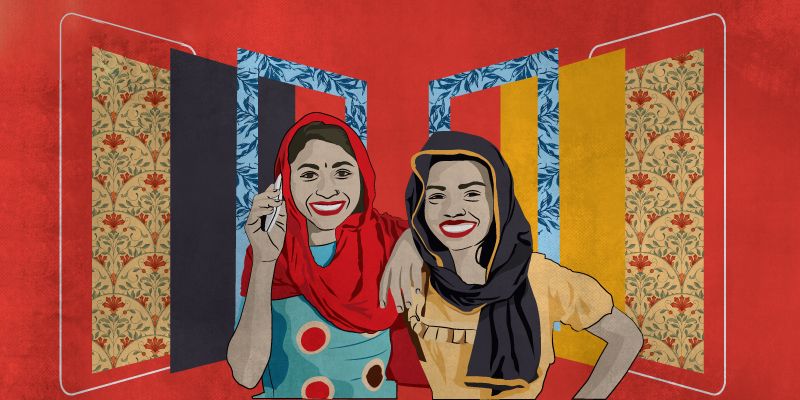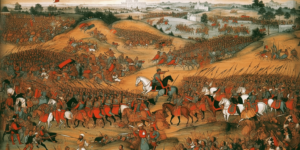
For long, urban India and rural Bharat grew along completely different trajectories. However, in the last decade or so, with the advent of the digital revolution, Bharat has had an opportunity to catch up with India.
According to Nielson’s ‘India Internet Report 2023’, rural India had 44% more internet users than its urban counterpart. A report from AWS estimates that the share of ecommerce from Tier I cities dropped from 46.4% in 2021 to 37.1% in 2022. During the same period, the share of Tier II cities grew from 19.4% to 21.4% and that of Tier III cities grew from 34.2% to 41.5%.
This presents a great opportunity for brands to tap into these markets.
Key markers of Tier II and III markets
Internet usage and penetration
With the emergence of reliable internet infrastructure in rural areas, high-speed internet is now a reality. According to a report by the Internet and Mobile Association of India and KANTAR, there are 692 million active internet users in India–351 million from rural India and 341 million from urban India. The report predicts that there will be 900 million internet users in India by 2025, with 56% of the new internet users coming from rural India.
Online shopping
Ecommerce is booming in the Tier II and III centres. As per a CMR study conducted in 2023, customers from Tier II centres and beyond are spending up to 16% of their income on online shopping. Online shopping allows these customers to fulfil their aspirations with various choices, convenience and comfort.
Local online searches
According to Google’s 2020 ‘India Year In Search Report’, there has been a 10X growth in the number of searches in local languages. As per Justdial’s study titled ‘How India Searched Report 2023’, Tier II and III cities across India contribute to 63% of India’s online searches.
Content consumption
As of 2023, Tier II, Tier III and rural India represent the largest audience for OOT content in India with nearly 80% of viewers and subscribers living in these centres, according to Boston Consulting Group.
Travel
Reports from different travel platforms point out that Tier II cities in India have been witnessing a boom in air travel. Government-led initiatives like UDAN (Ude Desh ka Aam Nagrik) have improved regional connectivity, establishing airports in Tier II and Tier III cities. This has significantly improved accessibility and consequently boosted air travel to and from these regions.
How to market to the emerging Tier II and III markets
As we can see from the insights above, Bharat is getting richer, digitally savvy, and ready to spend. No wonder then that brands are making a beeline to woo these customers. However, eager marketers need to remember that these consumers may be residing in small towns, but their knowledge and worldview are by no means small.
Here’s how marketers can approach consumers in Tier II and III centres.
Cater to the aspirations of rural customers
Just because a brand was conceived and launched in a metro city, it does not mean it is suited only for the urban consumer. With high internet penetration, the rural audience is just as tuned to the latest trends and pop culture as the urban consumers are.
However, instead of copy-pasting the urban templates into the rural markets, brands must cater to the unique needs and aspirations of customers in these markets.
Break down the language barrier
Brands are used to creating messaging in English while serving the urban centres. While catering to the audience in Tier II and III centres, brands must pay attention to the cultural nuances and lifestyle of the local population and not blindly translate the original messaging into the local language. This will make the message a lot more contextual and relatable.
Use influencer marketing smartly
While some celebrities have a pan-India connection, not all of them can connect with people from all regions and markets. Assuming so can prove to be an expensive marketing mistake.
Instead, brands must identify regional and local influencers who have stronger credibility in Tier II and III markets and use them to create a connection that a pan-India celebrity may not necessarily be able to establish.
Adopt new-age media
Brands tend to overbudget traditional media like radio, TV and OOH advertising in the Tier II and III markets. Thus, a lot of opportunities in new media are overlooked.
The rural markets also have a huge mobile-first generation that is spending more time on their screens than ever before. Brands need to factor in digital and social media marketing tactics, just as they would for their urban audience.
Brands trying to win in small towns and rural areas must recognise the digital transformation that has been underway in these markets. In the last decade or so, migration rates, internet penetration, and growing disposable income in these regions have completely transformed the world view of consumers here.
Brands that adapt their approach to cater to the unique needs of these markets are sure to win the hearts of Bharat.
(The author is an independent marketing consultant with over 14 years of industry experience.)
Edited by Swetha Kannan
(Disclaimer: The views and opinions expressed in this article are those of the author and do not necessarily reflect the views of YourStory.)










